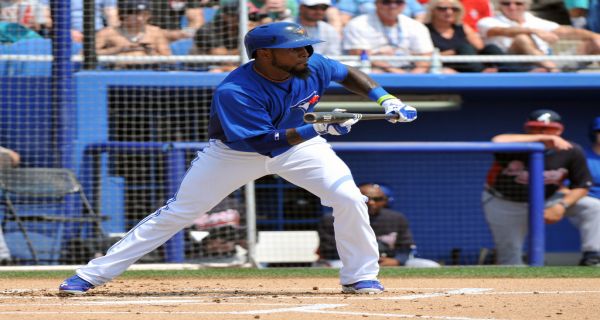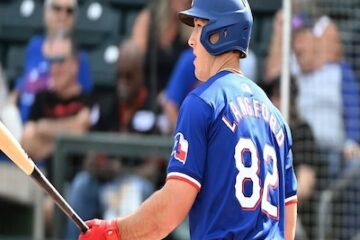How to Handle Different Categories: Slugging Percentage

Trying to prepare for leagues that replace standard categories can be difficult because almost all of the analysis, rankings and projections that you will find are based on the standard 5×5 roto categories. On Friday I examined how you should handle leagues that replace a standard category, batting average, with a non-standard category, OBP. The purpose of today’s post is to help those playing in leagues that replace home runs with slugging percentage.
When slugging percentage replaces home runs, you can’t simply look at the players with the best slugging percentages to see who gains an advantage in this format. What really matters is the difference in how each player performs relative to others in home runs and how each player performs relative to others in slugging percentage.
Again, this is assuming that you’re using rankings/projections from a source that has based their rankings/projections on the standard categories. If you have found rankings specific to slugging percentage leagues, or if you’ve made your own rankings to account for slugging, this article doesn’t apply. But the assumption is that the majority of people are using prep material geared toward standard categories.
When I do my own rankings and projections, I use something I call roto rating. The idea is fairly simple. I project each hitter for each category and then assign them a value for each category on a scale of 1-10. The scale is created by creating ten tiers for each category. Like most rankings, mine are based on the standard 5×5 categories.
I take the 200 hitters with the most plate appearances from the previous season (this being roughly the number of hitters usually drafted in a standard 12-team league) and create the tiers based on that list. For example, there were 20 hitters who hit 31 or more home runs last year and the next 20 hit between 25 and 30. If I projected a guy to hit 31 home runs or more, I assigned him ten points for home runs. If I projected a guy to hit between 25 and 30, I assigned him nine points. And so on and so forth. I also assign bonus points for guys that are a standard deviation or more above or below the mean. After I do that for each category, I add up all the points and give each guy a roto rating.
To determine how much of a bump to give or how much to knock a hitter down in a league that uses slugging percentage, I created tiers for slugging percentage. I also created tiers for plate appearances per home run instead of just home runs to account for injuries and other playing time issues. Below are the tiers I used:
|
SLG |
PA/HR |
||
|
12 |
.596 or higher |
12 |
N/A |
|
11 |
.545-.595 |
11 |
19.45 or lower |
|
10 |
.507-.544 |
10 |
19.46-20.45 |
|
9 |
.472-.506 |
9 |
20.46-24.67 |
|
8 |
.452-.471 |
8 |
24.68-28.36 |
|
7 |
.440-.451 |
7 |
28.37-31.16 |
|
6 |
.429-.439 |
6 |
31.17-34.96 |
|
5 |
.414-.428 |
5 |
34.97-38.81 |
|
4 |
.399-.413 |
4 |
38.82-48.67 |
|
3 |
.377-.398 |
3 |
48.68-63.28 |
|
2 |
.360-.376 |
2 |
63.29-89.37 |
|
1 |
.359 or lower |
1 |
89.37 or higher |
From there I can compare where a guy falls in the home run tiers to where he falls in the slugging tiers and adjust my ranks accordingly. Below are the guys who get the biggest bump and those that take the biggest hit in leagues that replace home runs with slugging percentage along with the number of points they gain or lose in my “roto rating” system.
| Name |
PA |
HR |
PA/HR |
RR |
SLG |
RR |
Difference |
| Jose Reyes |
1905 |
29 |
65.68966 |
2 |
0.45 |
7 |
5 |
| Victor Martinez |
1133 |
32 |
35.40625 |
5 |
0.481 |
9 |
4 |
| Carl Crawford |
1327 |
33 |
40.21212 |
4 |
0.456 |
8 |
4 |
| Carlos Ruiz |
1326 |
30 |
44.2 |
4 |
0.454 |
8 |
4 |
| Melky Cabrera |
1716 |
33 |
52 |
3 |
0.45 |
7 |
4 |
| Dexter Fowler |
1598 |
24 |
66.58333 |
2 |
0.439 |
6 |
4 |
| Joe Mauer |
1558 |
22 |
70.81818 |
2 |
0.437 |
6 |
4 |
| Billy Butler |
2030 |
63 |
32.22222 |
6 |
0.48 |
9 |
3 |
| Jacoby Ellsbury |
1139 |
36 |
31.63889 |
6 |
0.476 |
9 |
3 |
| Dustin Pedroia |
1705 |
48 |
35.52083 |
5 |
0.469 |
8 |
3 |
| Alex Gordon |
1692 |
45 |
37.6 |
5 |
0.458 |
8 |
3 |
| Michael Young |
2058 |
40 |
51.45 |
3 |
0.43 |
6 |
3 |
| Starlin Castro |
1912 |
27 |
70.81481 |
2 |
0.425 |
5 |
3 |
| Daniel Murphy |
1035 |
12 |
86.25 |
2 |
0.421 |
5 |
3 |
| Austin Jackson |
1960 |
30 |
65.33333 |
2 |
0.416 |
5 |
3 |
| Angel Pagan |
1824 |
26 |
70.15385 |
2 |
0.415 |
5 |
3 |
| Name |
PA |
HR |
PA/HR |
RR |
SLG |
RR |
Difference |
| Carlos Pena |
1788 |
75 |
23.84 |
9 |
0.408 |
4 |
-5 |
| Rod Barajas |
1037 |
44 |
23.56818 |
9 |
0.406 |
4 |
-5 |
| Mark Reynolds |
1754 |
92 |
19.06522 |
11 |
0.45 |
7 |
-4 |
| Miguel Olivo |
1257 |
45 |
27.93333 |
8 |
0.406 |
4 |
-4 |
| Russell Martin |
1348 |
44 |
30.63636 |
7 |
0.385 |
3 |
-4 |
| Justin Smoak |
1421 |
47 |
30.23404 |
7 |
0.377 |
3 |
-4 |
| Michael Saunders |
1059 |
31 |
34.16129 |
6 |
0.376 |
2 |
-4 |
| Juan Uribe |
1049 |
30 |
34.96667 |
6 |
0.371 |
2 |
-4 |
| Adam Dunn |
1793 |
90 |
19.92222 |
10 |
0.44 |
7 |
-3 |
| Adam Lind |
1508 |
60 |
25.13333 |
8 |
0.428 |
5 |
-3 |
| Pedro Alvarez |
1234 |
50 |
24.68 |
8 |
0.427 |
5 |
-3 |
| Colby Rasmus |
1685 |
60 |
28.08333 |
8 |
0.427 |
5 |
-3 |
| Geovany Soto |
1222 |
45 |
27.15556 |
8 |
0.416 |
5 |
-3 |
| Ty Wigginton |
1455 |
48 |
30.3125 |
7 |
0.406 |
4 |
-3 |
| John Buck |
1365 |
48 |
28.4375 |
7 |
0.402 |
4 |
-3 |
| Ryan Roberts |
1115 |
33 |
33.78788 |
6 |
0.392 |
3 |
-3 |
Not that it’s a big shock, but we find guys who hit a lot of doubles on the “good” list. Daniel Murphy, Alex Gordon and Billy Butler are 1st, 10th and 20th respectively in doubles per plate appearance in the last three years. We also find guys with speed who can leg out extra base hits. Jose Reyes, Carl Crawford and Angel Pagan are top ten in triples over the last three years.
What we don’t find are the stud hitters with great slugging percentages like Miguel Cabrera, Ryan Braun, Jose Bautista and many others because these guys hit a lot of home runs as well. Their value doesn’t change when you replace one category in which they are great with another category in which they are great.
On the “bad” list we find a lot of guys who have a high percentage of plate appearances that end in one of the three true outcomes: strikeouts, walks, and home runs. It seems a bit counterintuitive to think that some players who hit a lot of home runs will take a hit in a league that rewards slugging. But the formula is ([Singles] + [Doubles x 2] + [Triples x 3] + [Home Runs x 4])/[At Bats], so guys that have a high percentage of plate appearances that don’t end in doubles or triples are likely to take a hit in slugging percentage leagues. Adam Dunn, Mark Reynolds, and Carlos Pena have the highest percentage of plate appearances ending in one of the three true outcomes over the last three years, so it’s no surprise at all to see them on the bad list.





